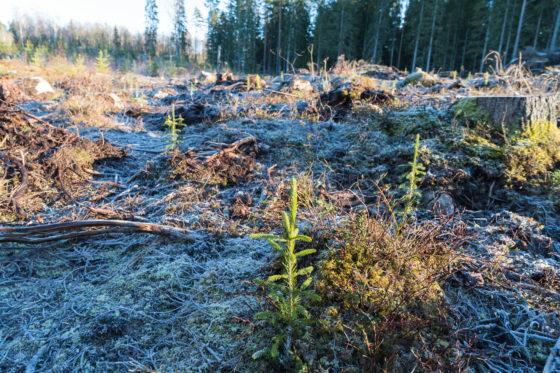Hundreds of new tree planters will be at work in B.C. in 2020. One employer shares how preventive taping and early reporting can prevent RSI injuries.

Photo credit: iStock.com/kn1
Hundreds of new tree planters will be at work in B.C. in 2020, according to this CBC article. They’re needed to meet the increased demand to replenish forests destroyed by fires and the pine beetle infestation, as well as to plant trees to slow climate change.
On average, a tree planter is expected to plant up to 2,000 trees a day. But doing the same thing over and over again can lead to injuries.
“Repetitive strain injuries are what takes most tree planters down,” says Robin McCullough, occupational health and safety coordinator at Brinkman & Associates Reforestation and chair of the Silviculture Advisory Committee of the Western Forestry Contractors’ Association.
Avoiding “thumb-side tendonitis”
The most common repetitive strain injury (RSI) is De Quervain’s tenosynovitis, known more commonly as “thumb-side tendonitis” of the wrist. One way to prevent this injury is by taping the wrists to keep them straight and provide support for muscles and tendons.
In 2017, physiotherapist Darrell Skinner did a study at Okanagan College and found that taping to prevent tendonitis in tree planters contributed significantly to reducing the number of injuries and how severe they were. (Read more about this study in Preventative physio revolutionizes injury management from Workplace Safety North, a health and safety association in Ontario.)
“We require all first- and second-year tree planters to be preventively taped — specifically for the thumb-side tendonitis,” Robin says, adding that the taping is done by contractors’ first aid attendants. “We’re doing a good job. It’s working.”
Encouraging a culture of early reporting
The success of preventive taping (since 2018) is reflected in injury statistics for Brinkman’s 1,200 tree planters in five provinces (mostly B.C. and Ontario). As far as the numbers go, there are more claims, but this is because supervisors encourage workers to report the very first signs of RSI. And even though there are more claims, they are of shorter duration than full-blown tendonitis claims.
“We really encourage that culture of early reporting. We want a camp or a project to recognize that talking about a tiny little warning sign doesn’t indicate weakness,” Robin says, describing how things have changed since she was a new tree planter in 1996.
“My generation associated having an injury as being ‘not strong enough to do the job.’ But today’s young workers will ask us, at the interview stage, what our health and safety program is like.”
Technology has also been a useful tool for reporting and preventing injuries. Workers in remote locations who report the first signs of RSI can then be connected with physiotherapists via FaceTime or Skype. And to help planters start the season as fit as possible, Robin and her team recommend a series of YouTube videos, including the one at the end of this post.
Tree planting in the time of COVID-19
The approach to tree planting will look a bit different this year given the COVID-19 pandemic situation. For more on what silviculture companies will be doing to fight the spread of the pandemic at their work camps this season, see this news release from the B.C. government, Additional guidelines for silviculture operators, employees. Also, for more on staying safe at work during COVID-19, see worksafebc.com.


